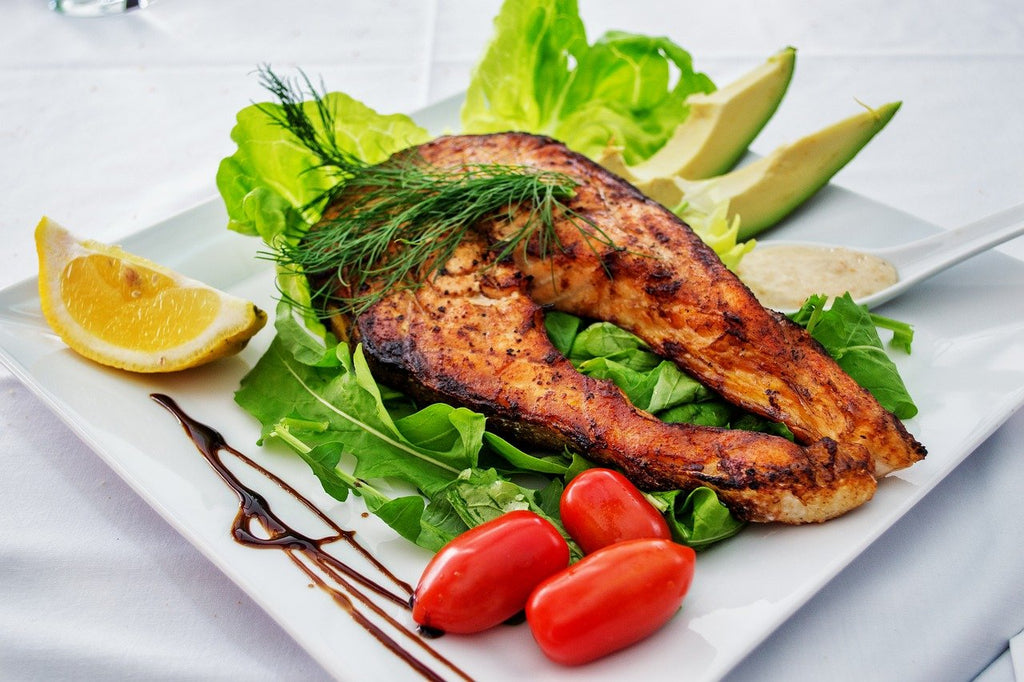Seafood Buyers Guide
When you set out to cook a delicious meal, you must start with the best ingredients. When cooking seafood it is no different. Top quality seafood will lead to outstanding results. For many people, seafood is a bit of a mystery. There are so many varieties and options that it can be overwhelming especially for those who are relatively new to cooking seafood.
Today the variety of seafood available to the Canadian consumer is massive. It can be intimidating to even get started. The most important thing you can do when looking to get the right seafood for your needs is to find a supplier that you can trust. The next step is to ask questions. Tell your fishmonger what you are looking to buy or the dish you are looking to prepare and leverage their experience to guide you to the items that will best serve your needs.
It can also be valuable to do your own research prior to reaching out to a seafood expert. The guide below will help to explain the basics in buying seafood to give you the confidence you need to buy the right seafood for your needs.
-
Fresh Vs. frozen Vs. Live:
The terminology around seafood can be confusing to some. Seafood is sourced all over the world and can be purchased in many forms. The most common ways you will see seafood sold are fresh, frozen and live.
Fresh Seafood - The term “fresh” most simply means never frozen. At Caudle’s you will find a wide variety of fresh (never frozen) seafood, in fact it is our specialty. At any location you can find a huge variety of fresh fish and seafood. Most of the fresh, never frozen seafood is caught or raised here in Canada or the USA. However we also offer fresh items from Europe, the Caribbean and South America. Modern logistics and packaging technologies allow fish to be flown or trucked long distances without compromising the quality. If you are able to buy quality fresh seafood it is highly recommended as the flavour and texture cannot be matched by frozen.
Buying fresh seafood:
The most important factor when buying fresh fish and seafood is to have a trusted source like Caudle’s. Having the ability to talk to your fishmonger, see, touch and smell the seafood is huge. When you are in-store you should feel comfortable asking any questions that you might have. Don’t be afraid to ask to see the fish up close or even smell it.
Smell: If the fish is fresh, your fishmonger should have no reason to hesitate to allow you to have a smell. Fresh fish should smell pleasant, slightly of the sea. There may be a slight “fish” smell but it shouldn’t be strong or off-putting. Anything with a heavy “fish” smell or any hint of “ammonia” should be avoided all together.
Appearance: The fresh seafood should have a vibrant colour and look slightly moist and shiny. It should not be dull or dry looking. The flesh should be firm and free of any gaps, when pressed gently the flesh should bounce right back. Take note how the fish is presented, if stored in a pan or tray it should be free of liquid. If you are buying whole fish, the eyes should be clear and bright, not sunken or cloudy. The gills should also be bright red and vibrant, not gray and slimy.
Frozen Seafood-
Most fish and seafood has a relatively short shelf life when compared to other proteins. For this reason, much of the seafood you find at the grocery store is offered frozen or previously frozen. At Caudle’s along with our huge fresh selection we offer a wide variety of frozen seafood. For many people, frozen seafood is a good option because they can simply store it in the freezer and use at their convenience. There are also a fair amount of varieties of seafood that are not available fresh due to what part of the world in which they are caught. There is simply no way to transport some seafood efficiently from overseas fresh so frozen becomes the only option.
When buying frozen seafood it should look appetizing, there should be no signs of freeze burn or excessive amounts of snow or ice inside the package. Items that are vacuum packed should be sealed tightly. Another key thing to be aware of is the ingredients and the country of origin. At the grocery store much of the frozen seafood offerings are from overseas, most notably China. Some frozen seafood especially from these areas may contain preservatives as well as added water and salt. Be sure to read the ingredients carefully when making your choices.
Live Seafood -
Seafood is unique in that a significant amount is actually recommended to be purchased live. This takes the term “fresh” to a whole new level! At Caudle’s we offer a great selection of live seafood options including mussels, oysters, clams and of course live lobsters. We are specialists in live lobster, boasting the largest live lobster holding system in Southern Ontario. We receive multiple shipments of live mussels and oysters directly from PEI as well as 2-3 shipments of top quality live lobster from Nova Scotia. Don’t let the fact that the seafood is live intimidate you. When sourced and handled correctly purchasing and preparing live seafood is a simple and enjoyable experience.
Mussels and Clams: There are a few key things to look for when you are buying live mussels and clams. The shells should look clean and not be cracked or broken. Mussels and clams can open when they are being stored or are sitting in the refrigerator. This is not a sign that they have gone bad or are dead. Often if tapped or shaken the shellfish will close up tight and are perfectly fine for consumption. If a clam or mussel does not open after shaking or tapping they are dead and should be discarded.
Oysters: When purchasing oysters you again are looking for clean, unbroken shells. Avoid buying oysters that are stored or sold on ice. The oyster naturally feeds on water surrounding it, the melting ice water will be ingested by the oyster and will dilute the natural salty flavour of the oyster leading to a more bland flavour. Typically the oyster you purchase should always be closed tightly. There are some varieties from the west coast like the Kusshi oyster that can open and close but for the majority of Atlantic oysters being open is a sign the oyster is dead and should be discarded.
-
Sustainability and Traceability:
As the demand for fish and seafood continues to grow around the world it becomes increasingly important to ensure the viability of future wild stock. Caudle’s is a big believer in sustainable and traceable seafood. We have partnerships with organizations like Ocean Wise and the Marine Stewardship Council (MSC) and several more. We are also a federally inspected and HACCP certified plant with a focus on food safety and traceability. Click here to learn more about our sustainability efforts. -
Perishability:
Seafood is more perishable than other proteins like chicken and beef, however there is some shelf life with seafood when stored properly. There is a perception out there that fish needs to be purchased and cooked immediately. This probably stems from the poor quality seafood offered in most places that has been mishandled and stored too long leading to little time left for the customer to store it. At Caudle’s our fish is transported and handled with care to ensure the best quality for the customer. We usually advise our customers that seafood purchased at Caudles can be stored 2-3 days in your home refrigerator without any worries or more in many cases.
The bottom line
We believe that trust is the most important factor when purchasing seafood and you should feel comfortable with your seafood supplier. You can ask questions and gather as much information as you can on your own and you definitely should but when it comes down to it you are relying on us to deliver what you need to make your meal exceptional. At Caudle’s our staff has over 250 years of combined experience in the seafood business. Our expertise in sourcing, handling and selling seafood allows us to offer our customers the best seafood experience possible.

